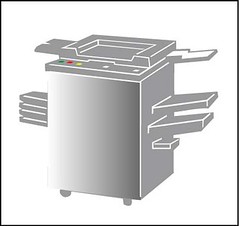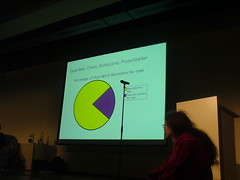

Copyright law does allow copying and usage for certain specific purposes (which are known as 'exceptions' to the law), without asking permission from the rightsholder. Please note that often only limited copying is permitted for these purposes - see the explanation of Fair Dealing below.
Those purposes particularly relevant to University activities like research and education include:
With the first three of these uses, it is necessary to be careful about how much of a work you use. Please see the boxes below, about how much can be legally copied.
If you have any queries, please contact the Copyright Librarian.
Anyone may copy an "insubstantial" part of a published work for private study and certain other reasons. Unfortunately, however, copyright law does not define what is meant by "insubstantial". For convenience 5-10% is sometimes recommended as a reasonable proportion, but what is more important is to make a judgement about the amount you would consider as fair to be copied if it was your work. The concept of 'fair dealing' will help with this - see this video about photocopying for personal use, and the box below.
Transcript: Copyright: Fair dealing
[Image of an iphone camera lens]. “Did you know that you can make copies of extracts from library books and journals using a mobile phone camera as well as a photocopier or scanner?”
[Image of a traffic stop sign] “BUT...”
[Image of a photocopier with book being photocopied.] “How much material by other people are you allowed to copy?”
[Image of an untidy desk (files, papers, pen, container of paper clips, etc.)] “As much as you need (but no more), up to about 5-10%.”
[Image of kitchen scales] “This is known as ‘Fair Dealing’, and is intended to strike a balance between your needs as a scholar and the creator’s livelihood.”
“For more information please see City’s Copyright Guide: https://www.city.ac.uk/library/support/copyright.”
[On screen text] “Credits
Bear in mind that the significance of the extract you use to the publication it is from is as important as the quantity you use when considering how much to reproduce. Sometimes even reproducing just a small detail can be significant enough to the work to go beyond what would be considered fair according to Fair Dealing.
The copy is not "fair" unless the answer to all four of the following questions is "yes":
It is essential to give a full acknowledgement of the source of any material copied in this way wherever this is possible.
*Based on or quoted from: Gov.uk (2014) Guidance: Exceptions to copyright. Available from https://www.gov.uk/guidance/exceptions-to-copyright#fair-dealing. Licensed under the Open Government Licence v3.0 (Accessed 1 September 2017)
If you think that what you want to copy will not be covered by Fair Dealing, then you will need to ask permission, normally by approaching the publisher or rightsholder. Publishers will usually have a webpage which will contain instructions. Sometimes you can ask permission by filling in an online form, or there may be an email address to use. If there is no webpage use their standard contact email. For other rightsholders (especially if not organisations), you may need to search internet and other sources to identify them and find contact details.
There are some other ways in which you can ask permission.
Remember that it can take time to get permission. If the rightsholder does not reply, this does not mean that you can use the material without permission.
'Photocopier' by mitopencourseware (CC BY-NC-SA 2.0) Accessed from Flickr 09/07/2015
'23C3: Powerpoint Karaoke - Pie chart which resembles Pac-man' by svenjas (CC BY-NC-SA 2.0) Accessed from Flickr 09/07/2015
